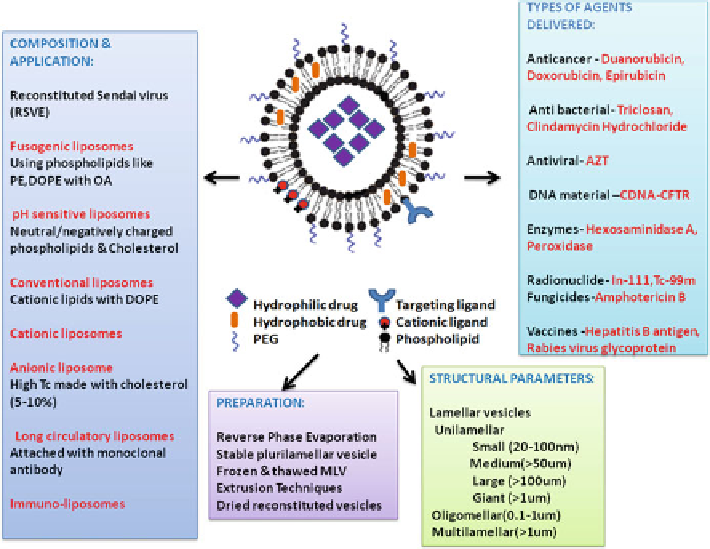Environmental Engineering Reference
In-Depth Information
Fig. 9.2 Composition, application, preparation, structural parameters, and agents delivered by
nanoliposome
classified according to their lamellarity (uni- and multi-lamellar vesicles, MLV),
intermediate, or large; and surface charge (anionic, cationic, or neutral) (Fig.
9.2
).
Liposomes without any aqueous material are called micelles; however, reverse
micelles can be made to encompass an aqueous environment. Different types of
liposomes, including cationic, temperature sensitive liposomes, pH sensitive and
virosomes, have been designed by modulating the formulation techniques and lipid
composition. Liposomes are prepared from diverse sources including mixed lipid
chains (like egg phosphatidyl ethanolamine, PE and phosphatidyl choline, PC),
naturally derived phospholipids and of pure surfactant components like DOPE
(dioleoyl phosphatidyl ethanolamine), polymers like poly (lactic-
co
-glycolic acid)
dilinoleoylphosphatidylcholine, synthetic zwitterionic materials such as poly
(carboxybetaine) and poly(sulfobetaine), Cholesterol succinyl chitosan like poly-
saccharide, Carboplatin-phospholipid, and many others as noted in Tables
9.1
and
9.2
[
5
-
7
]. Cationic lipid-based liposomes can easily complex with negatively
charged nucleic acids via electrostatic interactions, resulting in nanocarriers with
biocompatibility, low toxicity, and easy large-scale production required for in vivo
clinical trials. Liposomes in the nanosize range have been recognized as a versatile
drug delivery system of both hydrophilic and lipophilic molecules.

